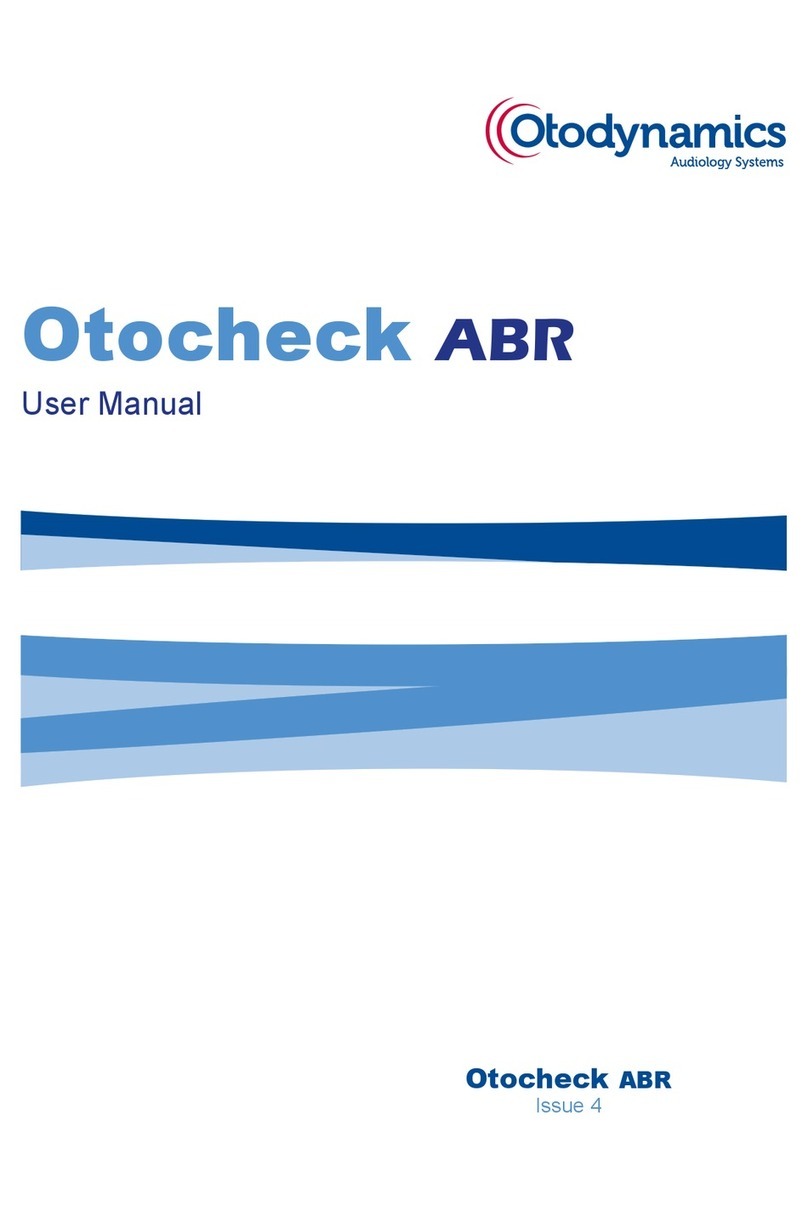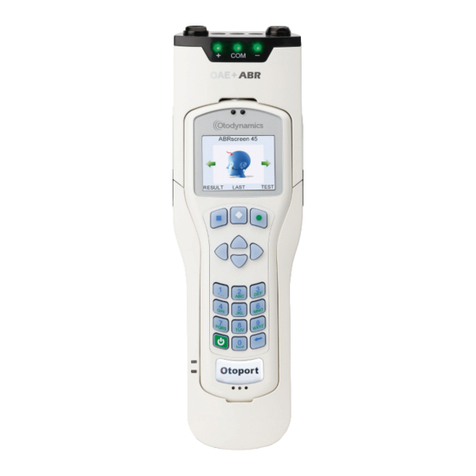
CHAPTER ONE
Introduction
10
Introduction
1.2 General guidance
Each test type provides evidence of normal peripheral hearing function
objectively and non-invasively.
The screening functions of this instrument are especially suitable for
use with infants. The ABR screening function uses conventional Fsp
methodology to detect the response supported by waveform identication
(Template Correlation) which is optimised for infants from 34 weeks to
6 months gestational age. Template-free pass criteria for ABR may be
selected for use with patients outside this age range (see chapter 15
Conguration, section 15.2.4 Pass criteria). OAE screening functions
include Otodynamics classic Quickscreen TEOAE technology and Rapid
DPOAE technology (depending on the model).
The device can be used in a wide range of dierent environments for
example in the well-baby nursery, the NICU, a doctor’s oce, an audiology
clinic, the outpatient clinic or in the home. For optimum results and short
test times the room should be quiet and the patient should be very quiet
and still during the test. The device will clearly indicate levels of acoustic
noise and electrical interference (with ABR). Use this as a guide to improve
the testing environment.
The screening functions of the device are intuitive and suitable for
operation by trained screeners without specialized knowledge. Testing and
interpretation is automated. The TEOAE and DPOAE analysis functions
of the device are intended for clinical audiological investigations when
objective non-invasive characterisation and monitoring of the functional
status of the peripheral auditory function is required. These functions
are intended for use as a part of the audiological diagnostic test battery,
not as solitary diagnostic tests. The OAE analysis functions provided on
some models are of particular interest to Audiologists, Ear, Nose and
Throat specialists, Neurology specialists, researchers and other health
professionals concerned with the dierential diagnosis of hearing problems,
the monitoring of changes to hearing, the conservation of hearing or the
detailed measuring peripheral auditory function.






























